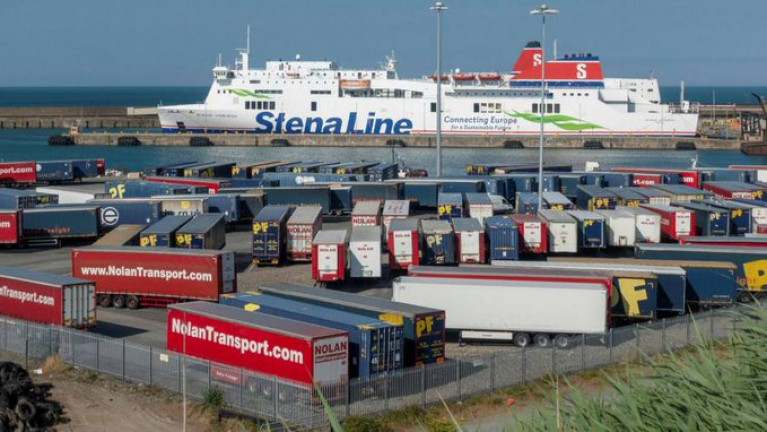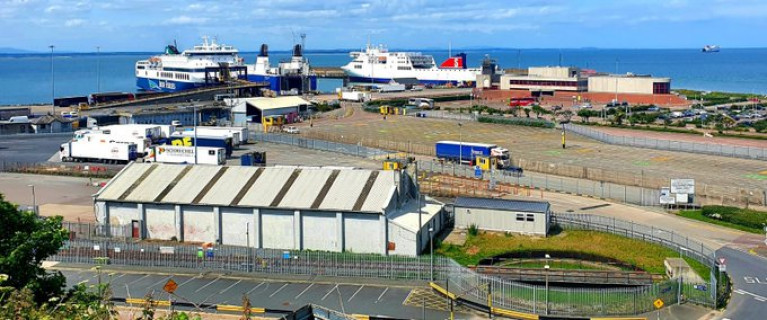Displaying items by tag: Port Masterplan
By 2030 Port of Cork to Vacate City Centre
The Port of Cork Company (PoCC) plans to move completely out of Cork city centre in the next eight years, as part of a €250m Masterplan for the Port that will move shipping activities to the lower harbour.
The PoCC has been holding public consultations on its ‘Port Masterplan 2050’ this week in a number of locations.
A major focus of the plan is for the PoCC to completely vacate the city centre by 2030, and vacate Tivoli by 2040, migrating all activities down to the lower harbour areas of Marino Point, Cobh, and Ringaskiddy.
“It’s not just about the Port going to the lower harbour because there are bigger ships and we have to have enough capacity for demand, it’s also about unlocking the city quays for development for urban living and sustainable active travel” said Tim Murphy, Head of Port Engineering with PoCC, speaking at the consultation day in Páirc Uí Chaoimh (yesterday).
He said that vacating Tivoli alone will unlock 150 acres for development in Cork city.
For more on the port's shift downriver, EchoLive reports.
Irish Rail (Iarnród Eireann) has announced the purchase of an 18-acre site in Rosslare Europort to support the future growth of the (ferry)harbour which has seen a significant increase in traffic and new routes.
The company also revealed that it has awarded the contract for a new fully-digital Port Terminal Management System.
The developments are part of the overall Rosslare Europort Masterplan designed to enhance port operations and customer experience.
Agreement has been reached to secure a strategic 18 acres of land on an adjacent site that is zoned for commercial use, beside the proposed new port freight entrance.
The site will have direct connection to both the port and the new port access road being constructed by Transport Infrastructure Ireland and Wexford County Council.
Wexford People has more on the development.
Also this week Irish Rail was awarded €2.5 million from EU funding into projects to improve transport links including by road with the port.
Rosslare Europort Welcomes Brittany Ferries New Weekly Direct Freight Route to Le Havre
Rosslare Europort has welcomed the announcement by Brittany Ferries of a new weekly direct (freight) service between Rosslare Europort and Le Havre, France.
The announcement comes as Rosslare Europort (operated by Irish Rail) delivers a 55% increase in freight traffic year to date in 2021
The new service, will begin operations next Friday 12th November from Le Havre, and will operate weekly as follows:
- Fridays depart Le Havre 19:00hrs, arrive Rosslare Europort 14:30hrs Saturday
- Saturdays depart Rosslare Europort 17:45hrs, arrive Le Havre 15:00hrs Sunday
The service will be operated by Brittany Ferries’ freight-only Cotentin vessel, with capacity for 120 freight units and 120 cabins, as well as a range of amenities for drivers including a restaurant, bar and shop. It will give Irish industry a further vital post-Brexit connection, with congestion-free access to Rosslare Europort, and landbridge-free access to the continent of Europe. It also strengthens the partnership between Rosslare Europort and Brittany Ferries, adding to existing Brittany Ferries services between Rosslare and Bilbao, and between Rosslare and Cherbour.
It will increase to thirty the number of direct weekly Ro-Ro services between Rosslare Europort and the European continent, cementing Rosslare’s status as Ireland’s Number one port for direct Ro-Ro services to Europe.
General Manager of Rosslare Europort Glenn Carr said “this is a further exciting development, not only for us in Rosslare Europort, but for Ireland as a whole, Irish industry, and the haulage sector.
We have worked with Brittany Ferries and collectively engaged with Irish hauliers and industry in identifying a new connection to meet the continuing rising demand for direct services to Europe. We are delighted in conjunction with Brittainy Ferries and the port of Le Havre to offer this exclusive Ro-Ro service out of Ireland.
The last 12 months has seen a transformative change both in terms of frequency and capacity in the services our shipping line customers are offering to and from Rosslare. The demand for these services can be clearly seen with overall freight up 55% at the port and continental traffic up an incredible 360%. The new service announced by Brittany Ferries today adds further capacity, frequency and choice for exporters and importers and will further enhance and complement existing services operated by our shipping partners between Rosslare Europort and Bilbao, Cherbourg and Dunkirk.”
Europort's Masterplan
As well as the new service, Iarnród Éireann - Port Authority for Rosslare Europort - is commencing in January 2022 a major infrastructure transformation of Rosslare Europort, as part of its Port Masterplan.
The Masterplan, together with initiatives under the strategic plan for the port, will see over €30 million invested by Iarnród Éireann in Rosslare Europort over the next number of years. It will ensure that Rosslare will be equipped with the capacity, facilities and technology to facilitate major growth for the benefit of the region and the wider national economy.
Major changes in the port will be:
- New configuration of the port aligned to maximise future growth of the port and support regional and national development
- Significant new facilities and infrastructure to develop Rosslare Europort to its full potential as Ireland's gateway port to the UK and Europe
- Design and develop a Sustainable, Seamless and Smart Port that will be best in class internationally
The development under the Masterplan will be completed over a number of phases over the next 2-5 years to enable the port continue to operate all services and activity during construction. Rosslare Europort is the closest port to the UK and mainland Europe and offers numerous daily/weekly direct Services to the UK, France and Spain.
As well as the port masterplan, further substantial investment will also take place both at the port and the surrounding area with the following further developments being completed during the same timeframe.
- Construction of the New N25 Rosslare Europort Access Road by TII and Wexford Co Council
- Further significant development of Rosslare Europort for future Offshore Renewable projects
- Construction by the OPW of the future permanent extensive facilities to meet all customs and Brexit requirements for state agencies at the Port, making Rosslare the only port outside of Dublin with the required Border Inspection Post
The combined developments will see the largest ever investment in the port and surrounding area, and will position Rosslare Europort to become the leading gateway for the country to the UK and Europe.






























































